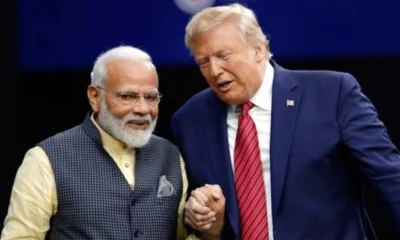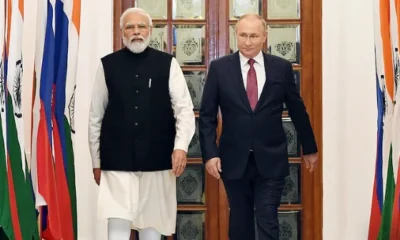Agriculture is in deep crisis, deepened further in the last three due to restrictions on livestock trade.
Yesterday (Wednesday, June 20) Prime Minister Narendra Modi interacted with select group of farmers through video-conferencing over the Namo App to hear stories of how some of them had increased incomes and were leading happy lives. Modi then repeated his promise of doubling farmers’ income by 2022.
Just about a week earlier, a Down To Earth (DTE) report titled “How India lost its historic agriculture recovery growth phase in just four years” should bring this narrative down to proverbial earth.
Citing Government data, it noted a disturbing trend. In financial year 2017-18, agriculture would be growing at 2.1 per cent compared to 4.9 per cent in the previous year – and this, when India had a normal monsoon and previous two years of below normal monsoon had provided a low baseline: after a drought, agriculture growth is higher due to low baseline level.
The DTE said a crucial fact that has been missed by Modi government is its own series of rigorous reports on agriculture called “The Committee on Doubling Farmers’ Income” led by Ashok Dalwai.
The first report of the Dalwai committee using inputs and research of over 100 experts has pointed out that India’s agriculture is currently in a deep crisis.
This analysis is supported by reports that farmers’ distress, and consequently, protests are growing all over the country. If that is unpalatable to Modi government, Modi government’s Dalwai committee report gives more inconvenient facts.
According to DTE, it says the country’s agriculture sector witnessed its highest ever growth phaseduring 2004-14: the period of Congress-led UPA-I and UPA-II governments. The report calls it the sector’s “recovery phase”; a term it defines as historic.“The agricultural sector grew at the growth of around 4 per cent per year during 2004-05 to 2014-15 and the growth was quite impressive as compared to 2.6 per cent per annum during the previous decade (1995-96 to 2004-05),” says the report.
More so, the report attributes this impressive agricultural growth more to government interventions than to other situational favourable conditions, said the DTE. “The most important factor for improved performance of agriculture, post 2004-05 period, has been the price received by the farmers caused by a number of underlying factors: hike given to MSP, increase in foodgrain procurement, increase in global agricultural prices and strong domestic demand for food,” it finds.
All recent farmers’ protests amid bumper harvests are for increasing the government’s minimum support price (MSP) and to force the NDA government to keep its electoral promise of a MSP plus 50 per cent extra to farmers.
Significantly – and alarmingly – it said that in the last three years, less than 10 per cent farmers could sell their produces in MSP, which is growing at pace seen during the 2004-14 period. Also, farmers across the country sold their bumper harvests at 30-50 per cent less than the MSP for all their produces during 2015-17.
The report just adds on to this worry of Modi. It sees the recent farmers’ protests as an indication of deepening crisis in agriculture sector post the “recovery phase”.
“At the basic level, agriculture when defined as an enterprise comprises two segments–production and post-production. The success of production as of now amounts to half success, and is therefore, not sustainable.”
“Recent agitations of farmers (June-July 2017) in certain parts of the country demanding higher prices on their produce following record output or scenes of farmers dumping tractor loads of tomatoes and onions onto the roads or emptying canisters of milk into drains exemplify neglect of other half segment of agriculture.”
Modi government’s performance in agriculture has been lacklustre, observes DTE. In 2015-16, agriculture contributed 17.4 per cent to India’s GDP, which was 18.3 per cent in 2013-14, the year before he came to power. In 2014-15, agriculture reported negative growth at -0.2 per cent. Despite this low base, next year it reported 1.2 per cent growth. And in 2016-17, it was estimated to be 4.1 per cent. At an average, the growth in the last four years is around 2 per cent.
Modi government’s cow preoccupation to push Hindutva agenda worsened this with cattle trade ban.
“The last three years are also known for restrictions on livestock trade. While government fiddled with this sector, the agrarian crisis deepened,” said the DTE.
It said the Dalwai Committee Report points out that the biggest contributor to the agricultural growth in 2004-14 was livestock sector, which has never reported a negative growth in the last 35 years.
“Thus, the livestock sector is likely to emerge as engine of growth of agricultural sector and can be relied upon for risk mitigation and minimising the losses to the farmers in case of even worst outcomes from others sub-sectors. Previous studies have unanimously reported that livestock as the best insurance against agrarian distress as the sector is the source of sustained income and generates income more frequently than the crop sector,” the report says.
It is known by this time that across north India, due to the restrictions and raids from cow protection groups, livestock trade and prices have crashed, the DTE said.
The DTE then delves into the question of whether a last-ditch attempt by Modi government to make its last full budget all about rural and agriculture sectors turn around the fate of farmers and rural Indians, or at least result in rich electoral harvest for Modi.
It answers in the negative, saying that the current agrarian crisis is too deep-rooted to witness an instant recovery through a farmer-friendly budget.
Looking into the income of a farmer in India, it says even during the “recovery phase”, a member of an agricultural household earned around Rs 214/month but his/her expenditure was about Rs 207, leaving a disposable income of just Rs 7/month.
Since 2015, India has witnessed two major droughts, some 600 incidents of crop losses due to unseasonal rains and other related incidents, and finally in two years of bumper harvests prices for their produces crashed majorly. It means, a farmer neither has any base capital to invest, nor has he the capacity to take the risk of going back to agriculture. This has added to the crisis that manifests in extreme resentments.
For the first time in recent history, relatively rich farmers were out on the streets protesting for better price for their produce, noted the DTE.
The Dalwai committee report shows that the government’s move to import foodgrains to curb inflation has majorly distorted the market against the domestic farmers. India’s export of agricultural produces has dipped. It recorded more than five times growth during 2004-2014: from Rs 50,000 crore to Rs 260,000 crore. In a year it dipped to Rs 210,000 crore in 2015-16, or a market potential loss of Rs 50,000 crore.
On the other hand, agricultural import has reported constant growth. It was Rs 30,000 crore in 2004-5, which increased to Rs 90,000 crore in 2013-14, the last year of the UPA-II government. In 2015-16, it reached to Rs 150,000 crore.
Close to 22 per cent of farmers subsist below the poverty line. The dip in farmers’ income, while giving a call for doubling income, shouldn’t be just another grand plan for a “new India”, because agricultural growth critically decides poverty reduction.
According to historic data, agricultural growth has much more impact on poverty reduction than any other activity like industrial growth. The DTE said it is time government got its focus back into the factors that once ensured this recovery phase.


 Entertainment9 hours ago
Entertainment9 hours ago
 India News14 hours ago
India News14 hours ago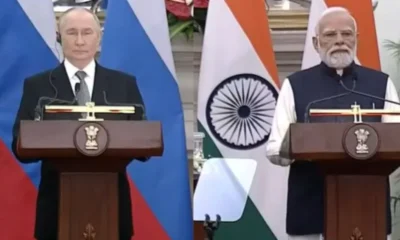
 India News9 hours ago
India News9 hours ago
 India News14 hours ago
India News14 hours ago
 Latest world news14 hours ago
Latest world news14 hours ago
 India News3 hours ago
India News3 hours ago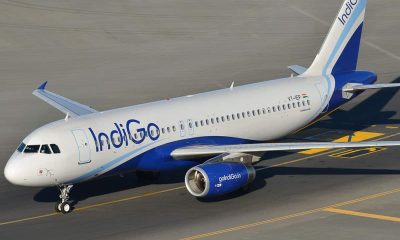
 India News4 hours ago
India News4 hours ago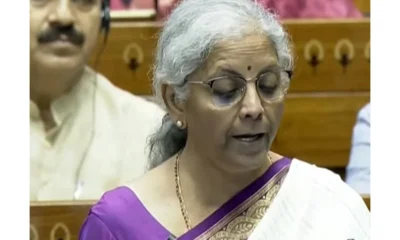
 India News3 hours ago
India News3 hours ago




